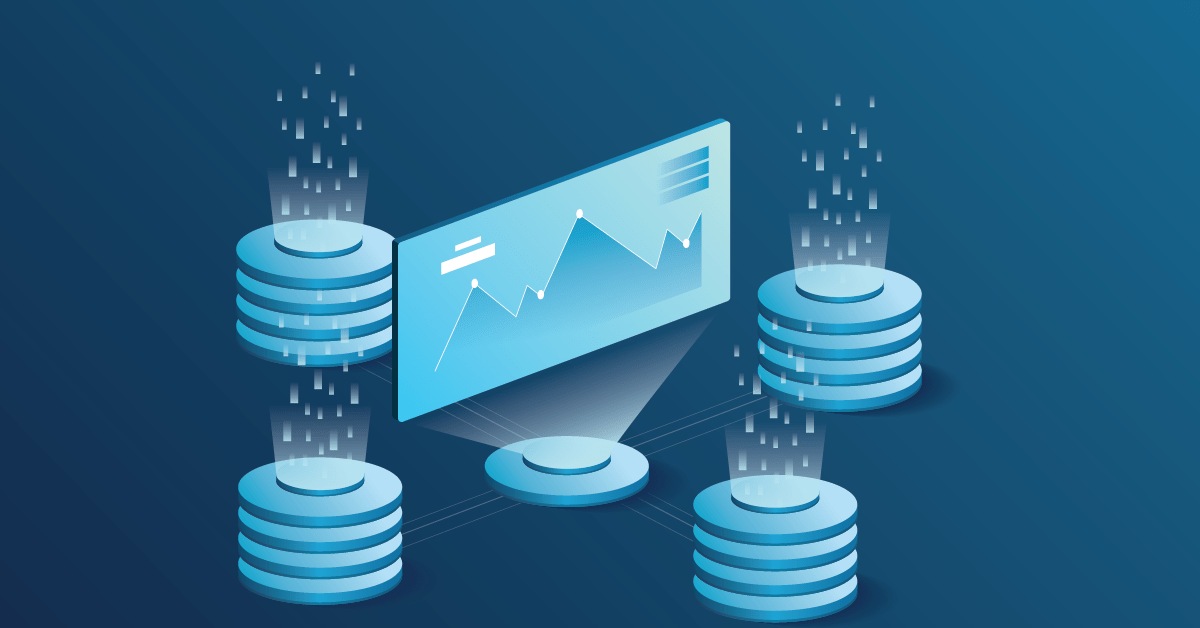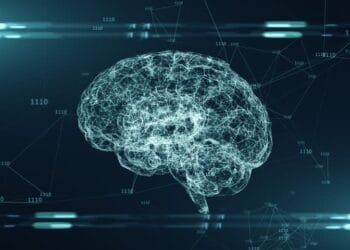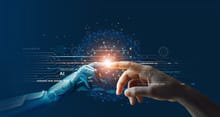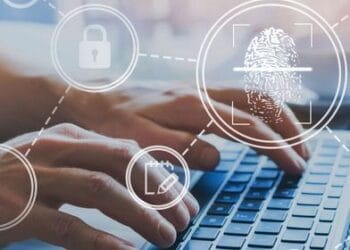In the 21st century, data has become the most valuable commodity, often referred to as “the new oil.” It fuels innovation, drives decision-making, and underpins nearly every aspect of our digital and physical lives. From personalized recommendations on streaming platforms to critical insights guiding medical research, the sheer volume and pervasive influence of data are reshaping industries, economies, and societies worldwide. This comprehensive article delves into the profound impact of data, exploring its lifecycle, the revolutionary technologies that harness its power, its transformative applications across diverse sectors, and the significant challenges that accompany its collection, analysis, and ethical use.
The Important of Data

At its core, data is a collection of facts, figures, objects, symbols, and events that have been collected, stored, and processed. It exists in myriad forms, from numerical statistics and text documents to images, audio files, and streaming video. The critical shift in recent decades is not just the volume of data, but our ability to collect, store, and, crucially, analyze it at unprecedented speeds and scales.
Data can be broadly categorized in several ways:
- Structured Data: Highly organized and easily searchable, residing in fixed fields within records or files. Examples include customer names in a database, product IDs, or transactional data. This is what you’d typically find in a relational database.
- Unstructured Data: Lacks a predefined format and is not organized in a pre-defined manner. Examples include text documents (emails, social media posts), images, audio, and video files. This type of data accounts for the vast majority of all digital information.
- Semi-structured Data: A hybrid that doesn’t conform to a rigid relational database model but contains tags or other markers to enforce hierarchy and meaning. Examples include XML and JSON files.
The true power of data lies not just in its existence, but in its ability to be transformed into information, and subsequently, into knowledge and wisdom, providing actionable insights that drive progress.
A. The Data Lifecycle
Understanding how data moves through various stages is crucial to appreciating its value. The data lifecycle typically involves:
- Data Generation/Collection: This is where data is created or captured. Sources are incredibly diverse:
- User Interactions: Clicks, likes, searches, purchases, app usage.
- Sensors: IoT devices, smart city sensors, industrial equipment.
- Transactions: Financial transactions, sales records, logistics data.
- Public Records: Government databases, census data.
- Research: Scientific experiments, surveys, clinical trials.
- Content Creation: Text, images, audio, video generated by individuals and organizations.
- Data Storage: Once collected, data needs to be stored efficiently and securely. This involves various technologies:
- Databases: Relational (SQL) and NoSQL databases.
- Data Warehouses: Centralized repositories for large amounts of integrated data from disparate sources, optimized for querying and analysis.
- Data Lakes: Stores raw, unstructured data at scale, allowing for more flexible future analysis without requiring immediate structuring.
- Cloud Storage: Scalable and accessible storage solutions provided by cloud providers like AWS, Google Cloud, and Azure.
- Data Processing: Raw data is often messy, incomplete, or redundant. Processing involves:
- Cleaning: Removing errors, duplicates, and inconsistencies.
- Transformation: Converting data into a usable format, often through normalization or aggregation.
- Integration: Combining data from multiple sources to create a unified view.
- Data Analysis: This is where the magic happens – extracting insights from processed data. Techniques include:
- Descriptive Analytics: What happened? (e.g., sales reports, website traffic).
- Diagnostic Analytics: Why did it happen? (e.g., root cause analysis of declining sales).
- Predictive Analytics: What will happen? (e.g., sales forecasting, customer churn prediction).
- Prescriptive Analytics: What should we do? (e.g., optimal pricing strategies, personalized treatment plans).
- Data Visualization/Reporting: Presenting insights in an understandable and actionable format through charts, graphs, dashboards, and reports, making complex data accessible to decision-makers.
- Data Archiving/Deletion: Managing data lifecycle to ensure compliance, reduce storage costs, and adhere to privacy regulations, including secure deletion when data is no longer needed.
B. Technologies Enabling Data Dominance
The current era of data dominance wouldn’t be possible without groundbreaking technological advancements.
- Big Data Technologies: Tools and techniques designed to handle datasets too large or complex for traditional data processing applications. This includes:
- Hadoop: An open-source framework for distributed storage and processing of large datasets across computer clusters.
- Spark: A fast and general-purpose cluster computing system for large-scale data processing, often used with Hadoop.
- NoSQL Databases: Flexible databases like MongoDB and Cassandra, designed to handle unstructured and semi-structured data at scale, offering high scalability and availability.
- Artificial Intelligence (AI) and Machine Learning (ML): AI and ML algorithms are the primary drivers of advanced data analysis, enabling systems to learn from data, identify complex patterns, and make predictions or decisions without explicit programming.
- Deep Learning: A subset of ML using neural networks to process vast amounts of data, excelling in tasks like image recognition, natural language processing, and anomaly detection.
- Natural Language Processing (NLP): Allows computers to understand, interpret, and generate human language, crucial for analyzing text data from social media, customer reviews, and documents.
- Cloud Computing: Provides on-demand access to scalable computing resources (servers, storage, databases, analytics tools) over the internet. This democratizes access to powerful data infrastructure, reducing upfront costs and enabling rapid scaling.
- Internet of Things (IoT): A network of physical objects embedded with sensors, software, and other technologies that connect and exchange data with other devices and systems over the internet. IoT devices generate an unprecedented volume of real-time data from diverse environments.
- Data Visualization Tools: Software like Tableau, Power BI, and Looker transform complex datasets into interactive visual representations, making data easier to understand, analyze, and communicate to stakeholders.
- Data Governance and Security Tools: Solutions for managing data quality, lineage, access control, and ensuring compliance with privacy regulations (e.g., GDPR, CCPA). This includes encryption, access management, and auditing tools.
Data’s Transformative Impact Across Industries

Data’s pervasive influence is reshaping virtually every sector, driving efficiency, innovation, and personalized experiences.
A. Business and Commerce
Data is the lifeblood of modern business, enabling smarter strategies and deeper customer understanding.
- Personalized Marketing and Customer Experience: By analyzing customer Browse history, purchase patterns, and demographics, businesses can deliver highly targeted advertisements, personalized product recommendations, and tailored customer service experiences, significantly improving conversion rates and loyalty.
- Optimized Operations and Supply Chains: Data analytics helps businesses forecast demand more accurately, optimize inventory levels, streamline logistics, and identify bottlenecks in the supply chain, leading to reduced costs and improved efficiency.
- Risk Management and Fraud Detection: Financial institutions use data to build sophisticated models that detect fraudulent transactions in real-time, assess credit risk, and identify suspicious activities, protecting both themselves and their customers.
- Strategic Decision-Making: Executives and managers rely on data-driven insights to make informed decisions about product development, market expansion, resource allocation, and competitive positioning, moving beyond intuition to evidence-based strategies.
- Human Resources and Talent Management: Data analytics is used to optimize hiring processes, identify high-potential employees, predict employee churn, and personalize training programs, leading to better workforce management.
- Product Development and Innovation: Companies analyze user data, feedback, and market trends to identify unmet needs, inform new product features, and even predict the success of future offerings, accelerating innovation cycles.
B. Healthcare and Life Sciences
Data is revolutionizing healthcare, leading to more precise diagnoses, personalized treatments, and faster drug discovery.
- Precision Medicine: Analyzing a patient’s genetic data, lifestyle, medical history, and environmental factors allows for highly individualized treatment plans, predicting drug efficacy and minimizing adverse reactions.
- Drug Discovery and Development: AI and big data analytics accelerate the identification of potential drug candidates, predict molecular interactions, and optimize clinical trial designs, significantly reducing the time and cost associated with bringing new medications to market.
- Diagnostic Accuracy: Machine learning algorithms can analyze vast amounts of medical images (X-rays, MRIs), genomic data, and patient records to assist in the early and accurate diagnosis of diseases, often identifying subtle patterns missed by humans.
- Public Health and Epidemiology: Data helps track disease outbreaks, model their spread, identify high-risk populations, and evaluate the effectiveness of public health interventions, aiding in pandemic preparedness and response.
- Personalized Wellness and Preventative Care: Wearable devices and health apps collect continuous data on vital signs, activity levels, and sleep patterns, enabling personalized health insights and promoting preventative care.
C. Government and Public Sector
Governments are leveraging data to improve urban planning, enhance public services, and increase citizen engagement.
- Smart Cities: Data from sensors, cameras, and IoT devices helps cities manage traffic flow, optimize public transportation, monitor air quality, manage waste, and enhance public safety, leading to more efficient and livable urban environments.
- Public Safety and Crime Prediction: Law enforcement agencies use data analytics to identify crime hotspots, predict potential criminal activity, and allocate resources more effectively, leading to proactive policing and reduced crime rates.
- Resource Allocation and Policy Making: Data provides insights into societal needs, resource consumption, and the impact of policies, allowing governments to make more informed decisions regarding budgeting, infrastructure development, and social programs.
- Disaster Management: Data from weather sensors, satellite imagery, and social media can predict natural disasters, track their progression, and coordinate emergency response efforts more effectively, minimizing loss of life and property.
- Taxation and Fraud Detection: Data analytics helps tax authorities identify evasion, detect financial fraud, and ensure compliance, leading to more efficient revenue collection.
D. Education
Data is transforming education by enabling tailored learning experiences and optimizing administrative processes.
- Personalized Learning Paths: AI-powered platforms analyze student performance, learning styles, and engagement to provide customized content, exercises, and feedback, adapting the curriculum to individual needs and improving learning outcomes.
- Predictive Analytics for Student Success: Data can identify students at risk of falling behind or dropping out, allowing educators to intervene early with targeted support and resources.
- Curriculum Development: Analysis of student performance data can inform curriculum design, highlighting areas where content needs improvement or adjustment.
- Resource Optimization: Data helps educational institutions optimize resource allocation, manage facilities, and streamline administrative tasks, leading to greater efficiency and cost savings.
- Talent Matching: Data on student skills, interests, and academic performance can be used to connect students with relevant career opportunities or higher education programs.
E. Agriculture
Data-driven insights are leading to a new era of “smart farming,” optimizing resource use and enhancing crop yields.
- Precision Agriculture: Drones, sensors, and satellite imagery collect data on soil conditions, crop health, weather patterns, and pest infestations. This data informs precise irrigation, fertilization, and pest control strategies, maximizing yields while minimizing resource waste.
- Yield Prediction: Machine learning models analyze historical data and current conditions to predict crop yields with greater accuracy, aiding in planning and market management.
- Livestock Monitoring: Sensors track the health, behavior, and location of individual animals, enabling early detection of diseases, optimizing feeding, and improving animal welfare.
- Water Management: Data from soil moisture sensors and weather forecasts helps farmers optimize water usage, reducing consumption and ensuring sustainable practices, especially in water-scarce regions.
- Disease and Pest Detection: AI-powered image analysis can quickly identify signs of crop diseases or pest infestations, allowing for rapid intervention and preventing widespread damage.
Challenges and Ethical Considerations in the Data Age
Despite its immense benefits, the pervasive nature of data presents significant challenges and critical ethical dilemmas that must be addressed for its responsible use.
A. Privacy Concerns
- Surveillance and Tracking: The constant collection of data from our online activities, devices, and physical locations raises concerns about pervasive surveillance by corporations and governments.
- Data Breaches: The immense volume of sensitive data stored by organizations makes them prime targets for cyberattacks, leading to data breaches that expose personal information and cause significant harm to individuals.
- Consent and Transparency: Ensuring that individuals understand what data is being collected about them, how it’s being used, and providing meaningful consent is a constant challenge, often hidden behind lengthy terms and conditions.
- Profiling and Discrimination: Data can be used to create detailed profiles of individuals, which, if misused, can lead to discriminatory practices in areas like employment, credit, insurance, or even law enforcement.
B. Data Quality and Bias
- Garbage In, Garbage Out: The quality of insights derived from data is entirely dependent on the quality of the raw data. Inaccurate, incomplete, or biased data will lead to flawed analyses and poor decisions.
- Algorithmic Bias: If the data used to train AI and ML models reflects existing societal biases (e.g., historical discrimination), the algorithms will learn and perpetuate those biases, leading to unfair or discriminatory outcomes in areas like facial recognition, loan approvals, or hiring.
- Data Silos: Data often remains isolated within different departments or systems within an organization, hindering a holistic view and limiting the potential for comprehensive analysis.
C. Security Risks
- Cyberattacks: Data is the primary target for cybercriminals, who seek to steal, encrypt (ransomware), or destroy it. Protecting vast and diverse datasets from increasingly sophisticated attacks is a monumental task.
- Insider Threats: Malicious or negligent employees can pose a significant risk to data security, either intentionally exfiltrating data or accidentally exposing it.
- Regulatory Compliance: Navigating a complex and evolving landscape of data privacy regulations (GDPR, CCPA, HIPAA, etc.) is a major challenge for organizations operating globally. Non-compliance can result in hefty fines.
D. Ethical Use and Accountability
- Misinformation and Disinformation: Data, especially through AI-generated content or manipulated media (deepfakes), can be used to spread misinformation and disinformation, impacting public opinion and democratic processes.
- Lack of Accountability: When AI systems make decisions based on complex data, it can be difficult to pinpoint responsibility when errors or harms occur, raising questions of accountability.
- Data Ownership and Monetization: The debate continues over who truly owns data (individuals vs. collectors) and how its value should be shared, particularly when personal data is monetized by large corporations.
- Algorithmic Transparency: The “black box” nature of some advanced AI models, where it’s difficult to understand how decisions are reached, poses challenges for auditing and trust, especially in critical applications.
Conclusion
Data is undeniably the defining asset of our age, fundamentally altering how industries operate, how businesses interact with customers, and how societies progress. Its capacity to transform raw facts into actionable intelligence has unlocked unprecedented levels of efficiency, personalization, and innovation across every sector imaginable. From the precision of modern medicine to the intelligence of smart cities and the personalization of our online experiences, data’s dominance is absolute and continues to expand at an astonishing pace.
For content creators and businesses, understanding and leveraging this data-rich environment is not just an advantage; it’s a necessity. However, the immense power of data comes with profound responsibilities. Addressing critical challenges such as data privacy, ensuring algorithmic fairness, combating cyber threats, and establishing clear ethical frameworks are paramount. By fostering collaboration among technologists, policymakers, ethicists, and the global community, we can ensure that data is not merely collected and analyzed, but harnessed responsibly to create a more equitable, efficient, and prosperous future for all. Data doesn’t just dominate; it defines our potential.












